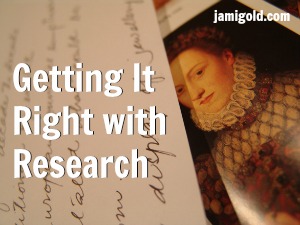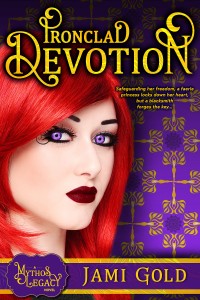Last week, we talked about how we can add diversity to our stories in a respectful way. Several of the comments brought up fantastic points, and some included helpful resources and links.
Obviously, the most helpful thing we can do to support diversity within the publishing industry is to buy and help promote books from diverse authors. As I mentioned last time, there might be some stories that aren’t ours to tell, so we also need to encourage the success of those authors who can tell those stories.
Along those same lines, I want to spotlight a tip that Debra Johnson shared in the comments (emphasis mine):
“Research is a great tool. However, you might want to check who created that source. Sources written by the majority culture about “Others” may carry internal bias.”
That’s an important point, as sources outside of the culture might frame explanations with an “othering” focus, which won’t help us avoid that issue in our work.
No matter what kind of story we write, we’re probably going to need to research something. Whether we’re referring to an aspect of diversity, a setting, or a character’s job, we can’t know everything about everything.
Heck, I’ve even seen posts geared toward romance authors for how to write heroes that come across as male and not just a Grr-Argh version of a woman. *smile* In short, research is how we ensure our story reaches the level of realism we want.
Types of Research
Ironclad Devotion, the third novel in my Mythos Legacy series releases this week, and research was at the core of every aspect of this book. Let’s take a closer look at how research can affect our story.
Story Seed:
Several years ago, my local paper ran a story by Karina Bland about the Bikers Against Child Abuse organization. Her story is amazing, and I encourage everyone to read it (with tissues handy).
“A child who has been abused by someone bigger and stronger knows too well what it feels like to be small and vulnerable. BACA shifts that balance by putting even bigger and stronger people – and more of them – on the child’s side.
And if those even-bigger and stronger people are scary-looking too, perhaps with flaming-skull tattoos, chains on their belts and scars of questionable origin, so much the better.”
I was so in awe of B.A.C.A. that I wanted to do a story involving them. Several months later, my heroine, Kira, was born in my imagination.
Sure, I write paranormal, so she’s a faerie princess who’s hiding out from a traitor to her race, but she’s also a tough, motorcycle-riding member of B.A.C.A. with a soft spot for kids.
Story Premise:
Kira has a special soft spot for one young girl in particular, Emily, and the story opens as Kira’s fostering and attempting to adopt the child. So that led to research on the workings of the Department of Child Safety (i.e., Child Protective Services), the foster care system, and the adoption process.
I talked to a social worker to ensure my thoughts for how Emily’s case would proceed were accurate, especially given the complications in her situation.
Story Ideas:
Because of the mythology-based paranormal romance stories I write, I read a lot about various myths and legends from all cultures.
An Irish story gave me the idea for the bad guy and his motivation. The mythology of fire faeries gave me ideas for plot events, complications, and even added an additional layer of subtext between my couple.
Character Images and Names:
Many authors enjoy looking for pictures to inspire their characters. I don’t always have a specific person or image in mind for my characters, but I frequently do. I’ll be sharing my original inspiration pictures for this story on my Ironclad Devotion Pinterest board over the next week or so.
I also pay attention to myths, legends, and additional meanings for my characters’ names. I almost always have a reason for the names of my main characters. For example, Kira means sun or throne in many languages, and either is appropriate for a faerie princess of the fire clan. *smile*
Character Jobs:
Zac, my hero, is an artistic blacksmith (furniture, decorative accents, etc.). To learn about his job, I read several articles about blacksmithing, learned the names of the tools and processes, and watched countless YouTube videos to see the work itself.
During a visit to a local Renaissance Festival, I talked to some of the blacksmiths working there to discuss the strength of iron and the plausibility of my plan for one scene. I got a thumbs down on my plan, and I had to change the scene, but it was better to know than to cause shudders and cringes for getting it wrong.
Character Diversity:
As I mentioned in my last post, Zac is half-Navajo, and although he’s dismissive of the Navajo culture and beliefs, I wanted to make sure the story itself wasn’t disrespectful. Other characters in the story live in the heart of the Navajo Nation, so I also needed to portray their life honestly. In addition, I wanted to make sure that I wasn’t exploiting or appropriating Navajo beliefs for certain paranormal-related aspects of the story.
To that end, I studied the Navajo culture from first-person accounts (either written by Navajos or those who had married into the tribe and lived and worked on the reservation). I read the tribe’s own tellings of their legends.
I studied their government websites and the terminology they use among themselves, including their clan and naming structure. I even learned some of their language and traditions.
Because of all that research, the feedback from the cultural sensitivity check that I mentioned in my last post came back with only two changes. Virginia pointed out that a Navajo wouldn’t use the word magic (as that would refer to witchcraft—and I probably should have picked up on that in my research, but things can slip through, which is why a double-check is so important), and she noted that one character’s last name should be changed, as my original choice, while not inaccurate, would be unusual. Whew—not bad! *smile*
Character Motivation:
Zac enters the story when he learns about Emily, the daughter he never knew existed. The “secret baby” trope is quite common in the romance genre, and some of them can be pretty far-fetched.
I needed Emily’s mother to have a darn good reason for keeping the secret from him, and I found it in my research into an aspect of Native American law. She fears the legal complexities of a custody hearing with Zac, and it’s only because of her death and Kira’s subsequent attempt to adopt Emily that the secret is exposed.
Setting:
I’m a big fan of Google Earth research for settings. I’ve looked up exactly where houses or neighborhood would be. I’ve cruised miles in Google Map’s Street View to see exactly what characters would see.
I’ve done Google searches to find pictures of exteriors and interiors of buildings to give details to my scenes. I’ve searched real estate sites for locations I want to set a character’s house in (many have interior photos, walk-throughs, or virtual tours).
Research like this can let us know what is and isn’t possible. Could our character’s house actually exist in that area?
Research Can Help All Aspects of Our Storytelling
In short, just about any aspect of our story might require research. And usually, the closer we can get to the source, the better.
I talked to direct sources for many aspects of this story, from the story premise to the hero’s job. I followed through with a read to check specifically for the diversity elements. Each time, I learned of minor changes I needed to make, but it’s far better to get it right than to make assumptions.
It’s likely that many of these research categories are familiar to us, no matter the type of story we write. So this list shows why we shouldn’t let the research into the diversity elements of our story hold us back or intimidate us from including diversity at all. If we can research all these other aspects of our story, we should be able to research the diversity aspects of our story as well.
In the end, we want to write a great story with characters that engage our readers’ imagination and details that don’t take them out of the story. And as I hope Ironclad Devotion shows, the result of all this work is worth it. *smile*
What types of research have you done for your stories? Can you think of additional categories? Are there some types of research that intimidate you more than others? Why? Are there some types of research you enjoy more than others? Do you have any questions for me about the research I’ve done?


